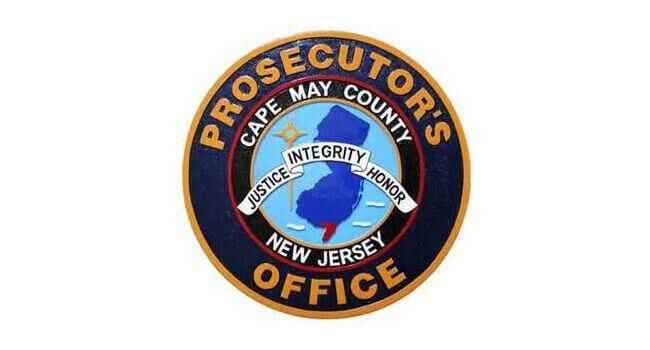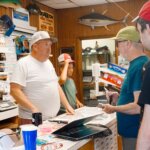CAPE MAY — After a year and a quarter of work Rhodeside and Harwell — Alexandria, Va.-based planning, urban designers and landscape architects — presented a draft of their final report on how to revitalize the look of this historic city.
Perhaps due to the first cool, windy weather of autumn, poor publicity or a competing chamber of commerce dinner at the Chalfonte Hotel, attendance at an Oct 11 meeting in convention hall was sparse.
Elliot Rhodeside, director of Rhodeside and Harwell, presented a scaled-down PowerPoint version of a 156-page report.
The city sought the study to deal with three summers of declining tourism and a growing perception the city needs to renew public spaces such as streetscapes, the Washington Street Mall, parks and the promenade.
Councilman David Kurkowski called the presentation by Rhodeside and Harwell’s a “vision of how we should proceed in the future.” He said the report would provide a good reference for years to come.
“It’s an extraordinary place,” said Rhodeside of Cape May.
From the beginning of its work, the firm settled on a theme of “The Garden City in the Garden State,” calling for flowering plants in pots and planters with flowering shrubs and trees wherever possible. The vision plan also suggests historically appropriate streetlights, benches and trash receptacles.
The presentation did not include many changes from simulations and findings presented at a previous meeting.
Among the recommendations: a 6-foot wide median strip on the west end of Beach Avenue with two 8-foot parking lanes and two 11-foot wide travel lanes, a more scenic area at the cove at the western terminus of the city with an overlook, improved restroom facilities, safer pedestrian crossings and improved beach access walkways and expanded plantings along the promenade and street.
A planted median was also suggested for Guerney Street.
While Rhodeside and Harwell will not participate in the design of a new convention hall, they recommended better pedestrian access, modification of buildings on the promenade to have a view of the ocean and encouraged more retail stores and improved beach stabilization.
The plan recommends extending bike lanes the full length of Beach Avenue to connect with bike lanes on Pittsburgh Avenue.
For the harbor area, the firm recommends an enhanced Texas Avenue neighborhood by narrowing the street, improved open space with links to trails and protection of natural areas.
While Rhodeside and Harwell had no involvement with designing an improved Washington Street Mall, they suggested making safe pedestrian crossings a priority, encouraging additional retail stores along alleys and side streets and make it the heart of the garden district.
The report recommends year-round trolley service, establishing a residential parking permit program and “shifting off-street parking to the edge of downtown.”
Rhodeside said improvements to the public realm should be made in phases “starting with small incremental changes to generate support and interest.”
How would the city pay for a number of improvements? The plan calls for the use of bonds, special assessment and improvement districts, public/private partnerships, room tax, loans, and state and federal sources.
Of 28 improvements evaluated, 13 are listed as priorities: city-wide bicycle routes, enhanced public space around convention hall, pedestrian access to parking improvements, Lafayette Street parking lot improvements, an additional trolley line, upgraded Jackson and Perry street gateway, improved signage, better maintenance of public and parks streetscapes, sidewalk upgrades, promenade resurfacing, improved Lafayette Street entrance to city and Carpenter/Lyle Lane reconfiguration.
The report made note of public comments received at three prior meetings including the need for better maintenance of the mall. The public said parks were underused in the city because of fewer families and an aging population, requested reorientation of the bandstand in Rotary Park, better maintained public restrooms, more facilities for young people, the creation of “car-free zones,” free trolley service, improved entrances to the city and improvements to make walking a safer mode of transportation.
The report suggests design guidelines for lights, signs, traffic signals, benches, bike racks, railings and fences, plantings and pedestrian surfaces in four districts in the city: historic neighborhoods, beach district, harbor district and 20th Century neighborhoods.
To improve the city’s tight parking situation, Rhodeside recommended studying whether the Jackson Street municipal parking lot should remain as surface parking or a garage should be constructed and whether additional city-owned land should be used for a parking lot or garage. The report suggests expanding the Cape May Elementary School parking lot.
The Acme parking lot is also eyed as a remote parking facility as part of a city-county-public-private venture.
Rhodeside and Harwell also suggest raising parking fees along Beach Avenue to create short-term use and “drop-offs.” While the first 20 minutes would be free, the next 20 minutes would cost $1 and an additional 20 minutes would be rated at $5.
The report has a lengthy section prepared by Kelly Brown of Basile Baumann and Prost Associates, of how to finance improvements, projected annual costs per project and return on investments. She said the city had two scenarios to decide what projects they should be funding.
The city could try to maximize the benefits by going after a few projects that cost a lot of money like Beach Avenue improvements or the city could try to optimize the number of projects it goes after by trying to identify the projects that are the least expensive but have a high benefit, said Brown.
Three projects using non-public money are identified: improvements to the promenade, narrowing Carpenter Street and Lyle Lane and upgrading the entrance to Cape May at Lafayette Street.
Five pay-as-you-go projects were highlighted by Brown: improving the intersection of Jackson, Perry and West Perry streets as a gateway point, creation of city-wide design guidelines for signage with replacements, extending existing trolley routes, upgrading existing sidewalks throughout the city and improving maintenance of public parks and streetscapes.
Items that could be financed by issuing bonds included: creation of city-wide bike routes, improving public spaces next to convention hall, improving sidewalks between Bank Street and the two Lafayette Street parking lots, adding a second trolley line and increasing capacity of the school parking lot, said Brown.
A copy of the report will be placed on the city’s Web site and be available in printed form at the Cape May Public Library.







